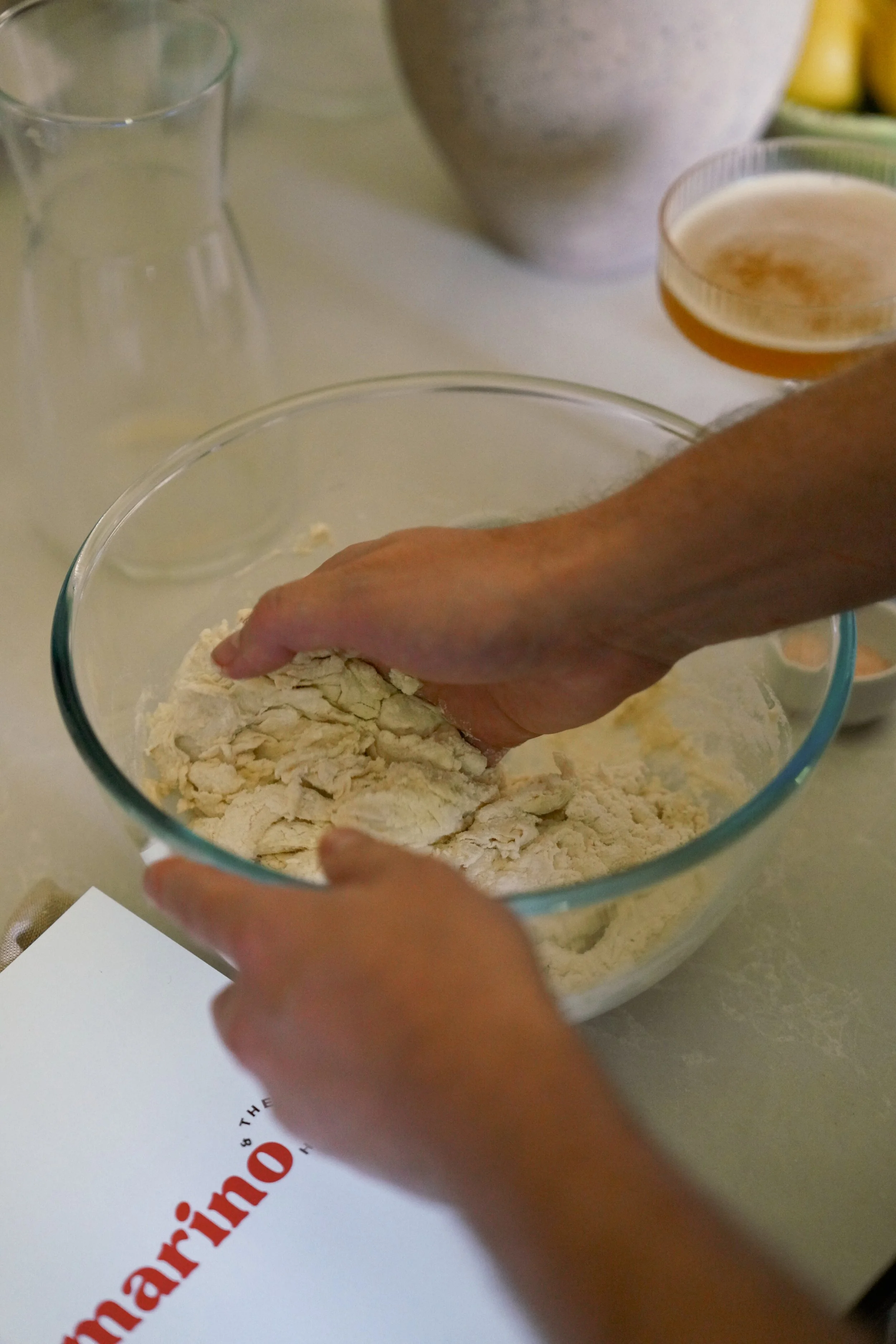Understanding Dough Fermentation: The 72-Hour Transformation
Great pizza doesn’t begin with toppings. It doesn’t even begin in the oven. It starts days earlier, with flour, water, salt, yeast, and time. At Marino & The Dough, we believe dough is more than just a base. It’s a living, breathing foundation. And the key to unlocking its full potential? Fermentation. Long, slow, deliberate fermentation.
In this post, we’ll explore the science behind extended dough fermentation, why 72 hours makes all the difference, and how this artisan approach elevates your crust from good to unforgettable.
What Is Dough Fermentation?
At its core, fermentation is what happens when yeast feeds on the natural sugars in flour, producing carbon dioxide and organic acids. This process is responsible for the airy bubbles, subtle tang, and complex flavour we associate with truly great pizza crust.
But it’s not just about the rise. Fermentation transforms the dough on a structural level, breaking down proteins, softening gluten, and allowing flavours to deepen and mellow.
Think of it like aging wine or curing cheese. Time develops character.
Why 72 Hours?
Many home pizza recipes call for just a few hours of proofing. And yes, you’ll get a decent crust that way. But with extended fermentation, especially the 72-hour kind, you step into a different realm entirely.
Here’s what happens over those three days:
1. Flavour Deepens
Natural enzymes have more time to work their magic, breaking starches into simple sugars. The result? A mild sweetness, a gentle tang, and a savoury complexity that doesn’t need extra seasoning. It’s dough with soul.
2. Texture Improves
A long ferment creates a crust that’s light yet chewy, with a crisp base and an open crumb, those gorgeous, irregular air pockets you find in artisan pizzas. The gluten relaxes, making the dough easier to stretch and shape without tearing.
3. Digestibility Increases
As fermentation progresses, some of the gluten and phytic acid (which can be tough on digestion) begin to break down. This makes long-ferment dough gentler on the stomach, something our guests often remark on after a masterclass.
4. Better Oven Spring
That final burst of heat in the oven causes well-fermented dough to puff dramatically, creating blistered edges and a beautiful crust. Short fermentations just don’t offer the same drama or depth.
How to Master the Long Ferment at Home
It’s not complicated. Just needs patient.
Start with a strong base
Use high-quality flour, such as Tipo 00 or a strong baker’s flour with a good protein content. Add water, salt, and just a tiny pinch of yeast. The low yeast content slows fermentation, giving you more control and more flavour.
Cold proofing is key
After your initial mix and a short rest at room temperature, pop your dough in the fridge. 72 hours at 4–5°C is ideal. This slow cold ferment develops richness and aroma while keeping the dough firm and manageable.
Bring to room temperature before shaping
Remove the dough from the fridge about 1–2 hours before you’re ready to bake. This allows it to relax, making it easier to stretch and preventing tears.
Don’t rush the process
Resist the urge to shortcut. Every hour adds nuance. Every slow rise is building something you can’t see, yet will definitely taste.
Fermentation Is the Secret Ingredient
Luke Marino often says that dough isn’t just about technique, it’s about rhythm. Understanding fermentation is about understanding patience. It teaches you to slow down, to let the ingredients speak, to trust the process.
When you take the time to ferment dough over 72 hours, you’re not just making pizza. You’re crafting an experience: artisan crusts that crackle, aromas that bloom, and bites that linger with depth and intention.
It’s a small act of care. One that starts in the fridge and ends at the table, shared with people you love.
Want to Learn the Craft Firsthand?
Join a Marino & The Dough masterclass and explore the art of long-ferment dough in your own kitchen. Luke will guide you through every fold, rest, and rise, so you can feel the dough change under your hands, and know exactly when it’s ready. Because perfect pizza crust doesn’t come from luck. It comes from knowing how to listen.


